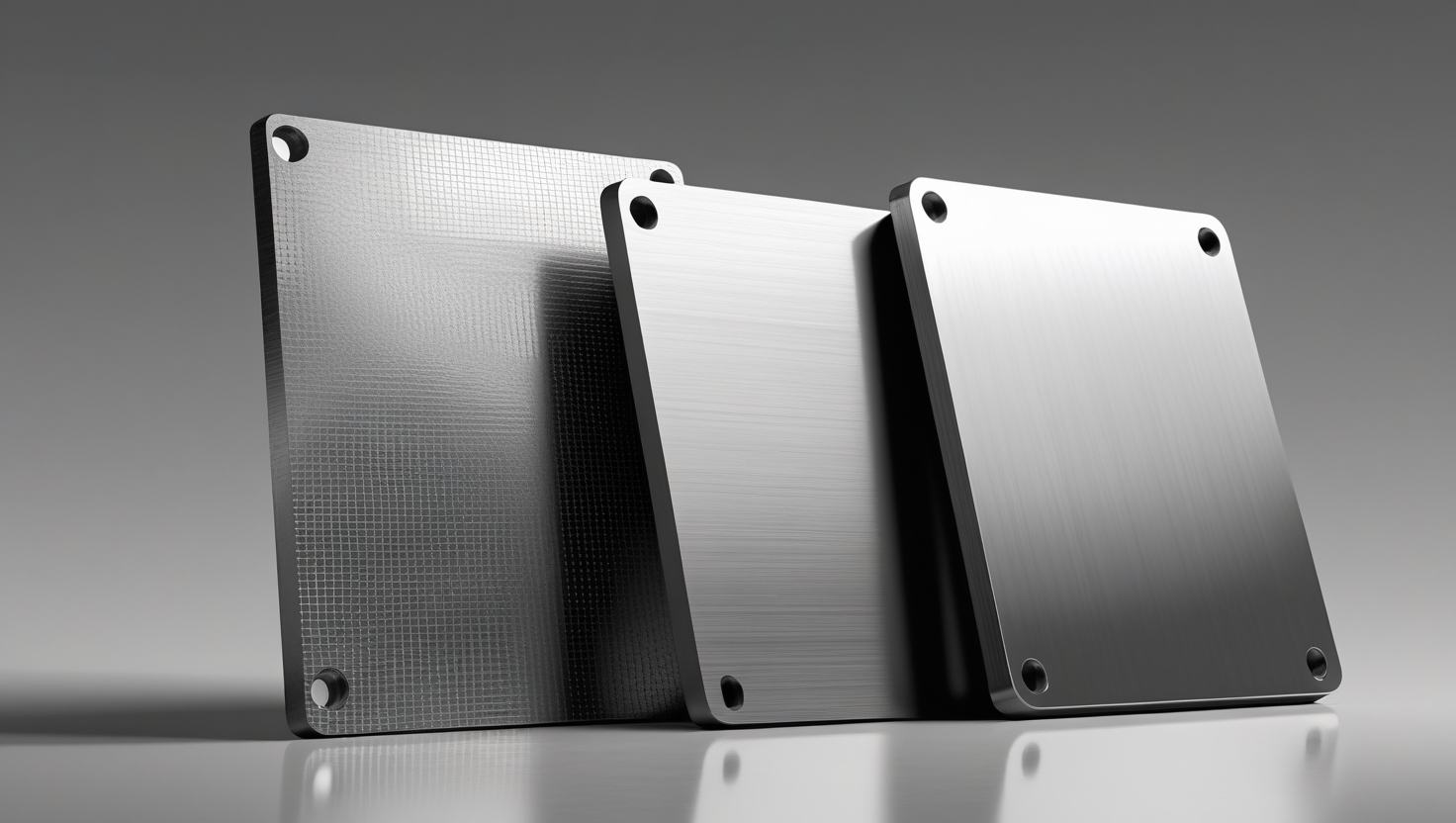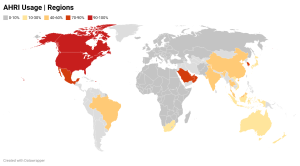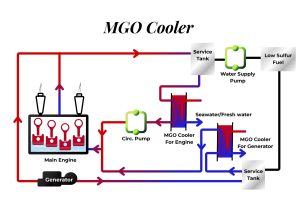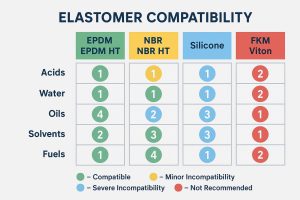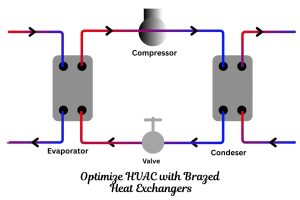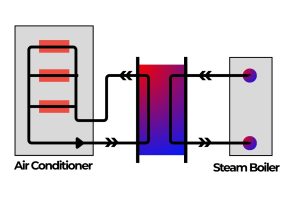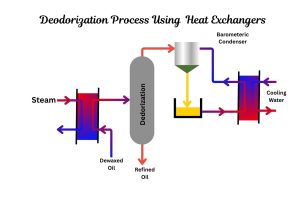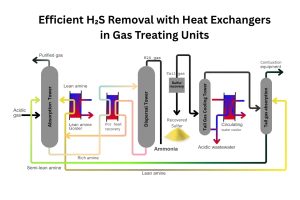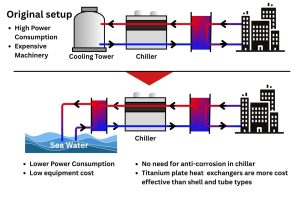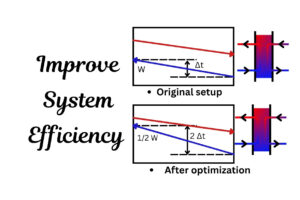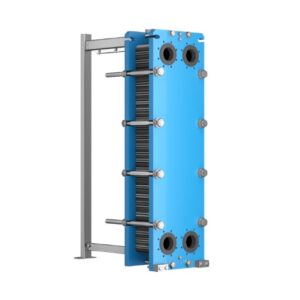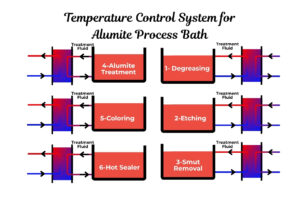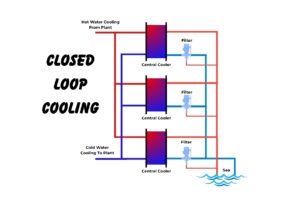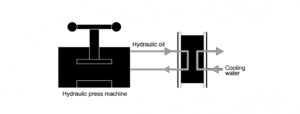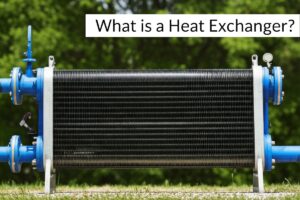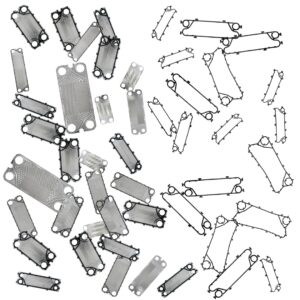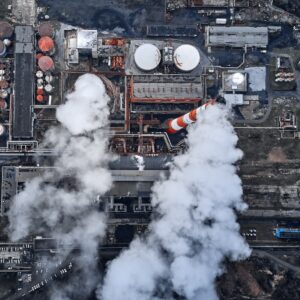Buying High-Performance PHE Plates: Hastelloy, Nickel Alloys, Titanium – Comparison, Price, and Sourcing Strategies
When standard materials like stainless steel aren’t sufficient to withstand severely corrosive media, high temperatures, or aggressive chemical environments in Plate Heat Exchangers (PHEs), engineers and purchasers turn to high-performance alloys. Among the most common choices for challenging PHE plate applications are Hastelloy C-276, various other Nickel alloys, and Titanium alloys. These materials offer exceptional resistance but come at a significant cost premium.
For purchasers, understanding the nuances of these materials – not just their technical capabilities but also their cost drivers and sourcing complexities – is vital to securing the best value. Choosing the right material at the right price ensures equipment longevity and avoids costly failures. This guide compares these high-performance options and offers strategies for smart sourcing.
The High-Performance Trio: Understanding the Alloys for PHEs
While all three categories offer advanced corrosion resistance, they each have specific strengths:
- Titanium Alloys (e.g., Commercially Pure Gr 1, 2, 7, 12): Titanium’s resistance comes from a robust passive oxide film. They are particularly effective against chlorides (making them ideal for seawater, brines, and desalination), oxidizing acids (like nitric acid), and wet chlorine gas. They also offer a high strength-to-weight ratio.
- Nickel Alloys (Various Grades like Alloy 20, Alloy 400, Alloy 625, Alloy 825): This is a broad category. Different nickel alloys are engineered to resist specific types of corrosion. For instance, Alloy 400 is good for reducing acids (sulfuric, hydrochloric) without aeration and seawater; Alloy 625 offers broad resistance, including to oxidizing and reducing media, and is very strong; Alloy 825 is known for resistance to sulfuric and phosphoric acids and stress corrosion cracking. SMO 254, a super austenitic stainless steel with high Nickel and Molybdenum, is often grouped here due to its high chloride resistance, approaching that of some nickel alloys.
- Hastelloy C-276: This specific Nickel-Molybdenum-Chromium-Tungsten alloy is renowned for its near-universal corrosion resistance. It performs exceptionally well in environments containing both oxidizing and reducing media, including sulfuric acid, hydrochloric acid, wet chlorine gas, ferric and cupric chlorides, and a wide range of mixed, aggressive chemicals where other alloys would be rapidly attacked. It is highly resistant to pitting, crevice corrosion, and stress corrosion cracking.
Property Comparison for Demanding PHE Service
When selecting a material for PHE plates in extreme conditions, key properties include:
- Corrosion Resistance Spectrum: This is the primary differentiator. Titanium excels in chlorides/oxidizing acids. General Nickel alloys offer varied resistance profiles depending on the specific alloy composition. Hastelloy C-276 provides resistance across the widest spectrum of highly aggressive, mixed chemical environments.
- Temperature Limits: All three can handle higher temperatures than standard stainless steels. Their specific maximum service temperatures in corrosive environments depend on the media; Hastelloy C-276 often maintains its exceptional resistance at significantly higher temperatures than Titanium in certain corrosive streams.
- Mechanical Strength and Fabricability: These alloys are strong and suitable for pressure vessel applications. They can be formed into corrugated plates and welded, though each requires specific expertise and procedures (e.g., vacuum or inert gas welding for Titanium, careful heat treatment for some Nickel alloys and Hastelloy).
Applications Requiring These High-Performance Plates
These advanced alloys are essential in PHEs for applications such as:
- Severe Chemical Processing (production of strong acids, bases, fertilizers, polymers with corrosive intermediates)
- Pharmaceutical Synthesis (handling aggressive solvents, corrosive reactants)
- Waste Treatment (processing highly corrosive or mixed effluents)
- Mining and Metallurgy (leaching processes using strong acids or chlorides)
- Offshore Oil & Gas (processing sour gas, handling aggressive produced water, marine environments beyond Titanium’s limit or with mixed corrosives)
- Pulp and Paper Industry (bleaching processes)
- Desalination (critical components beyond standard Titanium grades if bromide/iodide present)
The Cost Factor: Understanding the Price Hierarchy
High-performance alloys come at a premium. The relative cost hierarchy for PHE plates, starting from most expensive, is generally:
Hastelloy C-276 > Titanium Alloys ($\approx$ some high-end Nickel Alloys like Alloy 625) > Other Nickel Alloys > Super Austenitic/Duplex Stainless Steels > Standard Stainless Steels (304/316).
The cost is driven by the high percentage of expensive raw materials like Nickel, Molybdenum, Chromium, and Tungsten, as well as the complex, energy-intensive processes required for their extraction, alloying, and manufacturing into mill products (sheets, plates). Market fluctuations in the prices of these base metals significantly impact the final alloy cost.
Sourcing Strategies: How to Get the Best Price for Value
For purchasers, securing high-performance PHE plates isn’t just about finding the lowest quote; it’s about obtaining the best value and reliability for the long term. Here are key sourcing strategies:
- Prioritize Precision Specification: The single biggest cost driver is material over-specification. Work closely with experienced metallurgists and heat exchanger engineers to specify the material that precisely matches your operating environment (temperature, concentration, impurities, presence of chlorides/fluorides, oxidizing/reducing nature). Do not pay for resistance you don’t need.
- Choose Suppliers with High-Alloy Expertise: Select heat exchanger manufacturers who have proven experience in fabricating PHEs from these challenging materials. Their expertise in sourcing certified mill products, specialized welding, forming, and quality control is critical to avoiding defects and ensuring the final product performs as expected. They likely have established relationships with reputable alloy mills (like Haynes International, Special Metals, VDM Metals, ATI).
- Focus on Total Cost of Ownership (TCO): The cheapest upfront price for a critical component made from expensive alloys can be misleading. Consider the total cost over the equipment’s lifespan, including expected maintenance, cleaning frequency, the risk and cost of unplanned downtime due to corrosion failure, and the safety implications. A correctly specified, higher-priced alloy might save significant money in the long run.
- Leverage Supplier Sourcing Power: Large, reputable PHE manufacturers often have significant buying power and established relationships with global alloy producers. They can sometimes source the raw material more efficiently than smaller shops, potentially translating to better value for you.
- Understand Market Trends: While you don’t need to be a metals trader, being aware that prices for Nickel, Molybdenum, and Titanium can fluctuate based on global supply and demand helps contextualize quotes.
- Request Detailed Quotes: Ensure quotes clearly break down material costs (if possible), fabrication, testing, and delivery. Evaluate multiple quotes, but vet suppliers based on their technical proposal and experience, not just the bottom line.
History & Origins: The Development of Advanced Alloys
The development of Nickel alloys and Titanium alloys is a triumph of 20th-century metallurgy, driven by the extreme demands of new technologies and industrial processes. Nickel alloys evolved from simpler copper-nickel alloys to complex formulations incorporating chromium, molybdenum, iron, cobalt, and other elements to achieve specific corrosion and high-temperature resistance profiles. Hastelloy C-276, developed by Haynes International, was a breakthrough alloy in the 1960s, specifically designed to overcome the welding limitations and improve the broad corrosion resistance of earlier nickel-chromium-molybdenum alloys.
Titanium’s industrial use also expanded significantly in the mid-20th century following advancements in extraction (like the Kroll process) and processing, initially for aerospace and then increasingly for corrosive industrial applications. The raw materials (Nickel from sulfide and laterite ores, Titanium from ilmenite and rutile, Molybdenum often as a byproduct) are mined in various regions globally, forming the base of the supply chain for these high-performance PHE plates.
Conclusion
Hastelloy C-276, other Nickel alloys, and Titanium alloys are indispensable materials for PHE plates operating in environments too harsh for stainless steels. Each offers a unique set of properties to combat specific corrosive challenges. For purchasers, selecting and sourcing these alloys effectively means moving beyond simple price comparison to a strategic approach focused on precise material specification, understanding total cost of ownership, and partnering with heat exchanger suppliers who possess deep metallurgical and fabrication expertise.
Making the right material choice for a high-performance PHE is a critical investment. At HeatingFormula, we specialize in advanced heat transfer solutions and guide purchasers through the complex process of selecting the optimal material – whether it’s a specific Titanium alloy, a Nickel alloy, or Hastelloy C-276 – for their unique corrosive applications. We leverage our expertise to ensure your PHE is correctly specified for maximum longevity and performance, representing the best value for your investment. Explore our [GPHE Selection Guide](https://heatingformula.com/en/gphe-selection/) or Contact us today for expert advice on high-performance PHE materials, sourcing strategies, and necessary GPHE Spare Parts for these specialized units.
Frequently Asked Questions (FAQ) About High-Performance PHE Alloys
-
Q: Which alloy offers the widest range of corrosion resistance among Hastelloy C-276, Nickel alloys, and Titanium?
A: Hastelloy C-276 is generally considered to offer the widest range of corrosion resistance, standing up to both oxidizing and reducing acids, chlorides, and many other severe chemicals where other high-performance alloys might fail. -
Q: Why are Hastelloy, Nickel alloys, and Titanium plates significantly more expensive than stainless steel?
A: Their higher cost is due to the high content of expensive alloying elements like Nickel, Molybdenum, Chromium, and Titanium itself, combined with complex, energy-intensive extraction and processing required to produce mill products from these materials. -
Q: What is the biggest factor influencing the price of a high-alloy PHE plate?
A: The single biggest factor is typically the cost of the raw alloy material itself, which constitutes a large percentage of the final plate price. -
Q: Where do the raw materials (Nickel, Titanium, Molybdenum) for these alloys come from?
A: These metals are sourced from mining operations globally. Major Nickel producers include Indonesia, the Philippines, and Russia. Titanium comes primarily from ilmenite and rutile ores mined in countries like Australia and South Africa. Molybdenum is often mined as a primary ore or a byproduct of copper mining in countries like China, the United States, and Chile. -
Q: How precise does material specification need to be for these alloys?
A: Material specification needs to be very precise. Even slight variations in fluid temperature, concentration, or the presence of minor impurities can significantly alter the corrosion behavior, making it crucial to select an alloy that specifically resists the exact conditions of your process to ensure both performance and cost-effectiveness.
